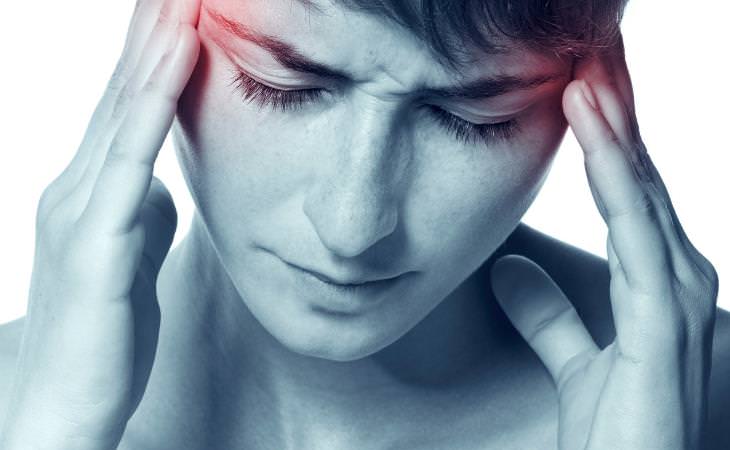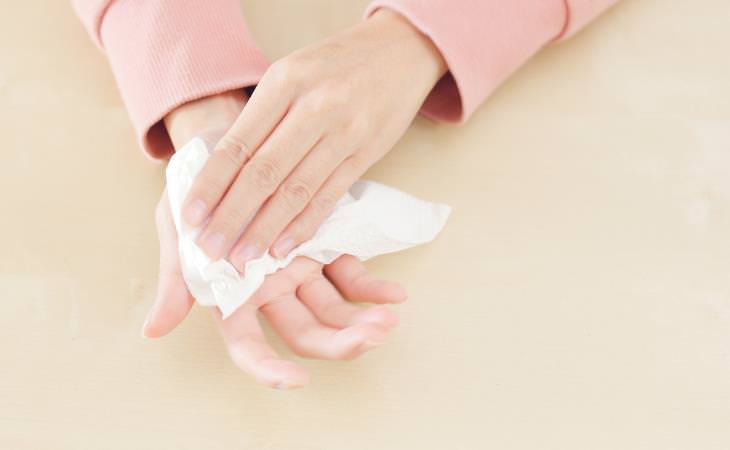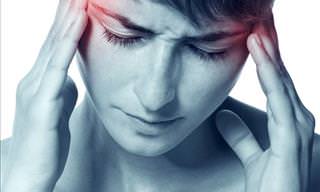1. Botox Can Treat Migraines
Influencing pain receptors in the same way it would influence the muscles in your face, Botox paralyzes certain areas in your head and neck so that you won't feel the pain. If that sounds scary, let us clarify: you yourself will not be paralyzed. On the contrary, you'll regain full range of motion without the pain and other symptoms of migraine. Botox only blocks the neurotransmitter chemicals that are responsible for carrying the pain signals to your brain.
Patients should feel positive results within 10 to 14 days from the first treatment, but if you're interested, know that no less than 31 injections await you at the doctor's office on the way to a migraine-free life! These will be injected into your forehead, neck, upper back, back of the head, above the nose, and temples.
2. Botox Can Treat Excessive Sweating
This condition is also called Hyperhidrosis. It is an illness in which there is no relation to a person's mental state or temperature to the amount of sweat produced by the body. Sweaty palms in particular can interfere with simple daily activities such as holding a pen, turning a doorknob, or even holding a phone. Botox can be injected directly into sweaty areas of the body to paralyze nerves that are responsible for sweat. Sweat glands will then stop working excessively. Some people may take them for excessive armpit sweating during the summer, as well as other places on the body.
3. Botox Can Treat Cervical Dystonia
People who suffer from this condition have muscles in the neck and shoulder areas that contract involuntarily, causing pain and fatigue. When the Botox is injected in small quantities, it works to help relax those muscles. At the same time, it will block nerve signals sent to the brain from neck and shoulder muscles that are responsible for the involuntary contractions.
4. Botox Can Treat Overactive Bladder
This condition mostly affects women, interrupting the smooth operation of daily life and negatively affecting the quality of sleep. Symptoms include frequent urination, bladder spasms, bedwetting, frequent urge to urinate, and leaking of urine due to an overactive bladder muscle. In this condition, like in all others on the list, Botox will help relax the muscles of the bladder.
Contrary to what your intuition may tell you, this won't mean you won't be able to hold in pee. Overactive bladder muscles push too hard, not allowing urine to accumulate in the bladder. Once the muscles are relaxed, all symptoms should be relieved within a few days.
Caution: As precision is required in this treatment, make sure that you are being advised by a urologist.
5. Botox Can Treat Depression
This is considered a relatively new treatment. There are many treatments for depression itself and treatments that can alleviate symptoms and help in getting back to daily functionality. Botox for depression is considered a complementary treatment, meaning it is part of a whole series of various treatments. It will not help you out of depression on its own. The treatment itself is almost identical to cosmetic injections, with the same aim of paralyzing certain facial muscles.
There is certain muscle activity that is increased in people with depression, particularly frowning muscles. The phrase "fake it till you make it" is 100% true here: if you frown, this sends negative signals to your brain, and if you smile, the opposite happens. This means that yes, even if you force a smile, it can trick your brain into being happier. Botox treatment helps in blocking these frowning muscles, resulting in improved mood and reduced depression.
 Go to BabaMail
Go to BabaMail























































